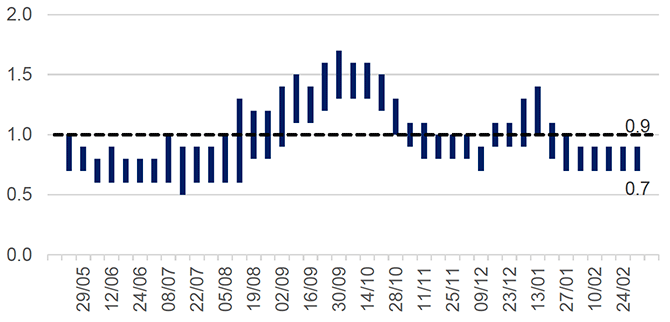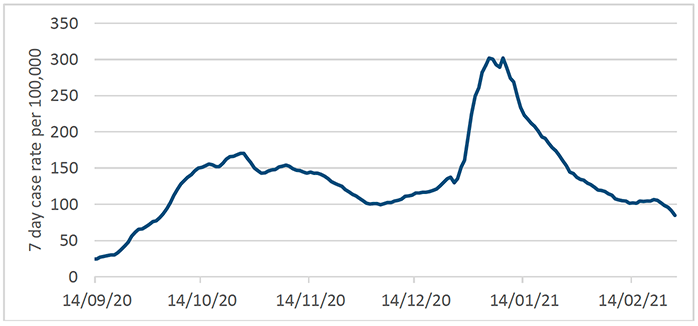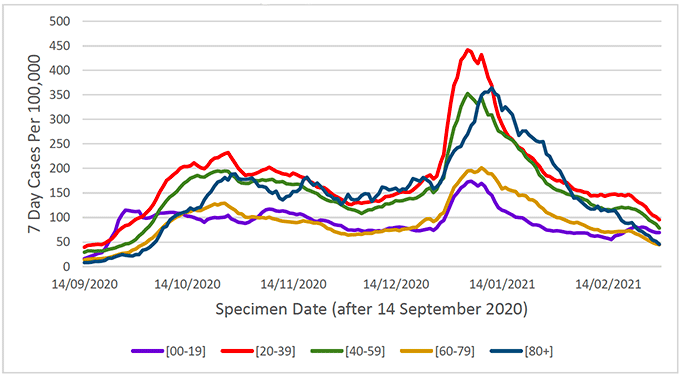Coronavirus (COVID-19): state of the epidemic - 5 March 2021
Brings together the different sources of evidence and data about the covid epidemic to summarise the current situation, why we are at that place, and what is likely to happen next.
This document is part of a collection
The national picture
The latest R value for Scotland (published on 4 March)[2] has remained the same as the previous four weeks and was between 0.7 and 0.9 (Figure 1), with a growth rate of between -6% and -2% .

Since they were introduced in early January at a national level we have seen the impact of stay at home measures in reducing the level of SARS-CoV-2 in Scotland. After a period of plateau there has been a decrease in the average number of cases reported daily. An average of 521 cases were reported per day in the 7 days to 4 March, which is a 33% decrease in reported cases since the 25 February[3]. Average daily cases reported have reduced by three fourths since the peak of 2,323 in the week to 7 January. Our current position is 72 weekly cases per 100,000 in the week to 1 March[4]. This compares to 302 weekly cases per 100,000 on 8 January and is now similar to the weekly case rate observed at the end of September (see Figure 2). Test positivity has decreased since stay at home measures were introduced, and is now at 3.6% on average over the past week (to 1 March)[5].

Two weeks ago we saw a sharp decline in the case rate in the over 80s, and there has been a further sharp drop in cases in this age group this week. Cases in those under 20 years old have plateaued, with case rates falling in other age groups this week (Figure 3).

Not everyone who has the virus will be tested, as many people do not realise they have COVID, or have mild symptoms and do not come forward. Latest modelled estimates suggest there are currently anywhere between 800 and 1,700 people infected in Scotland each day2. This means that as of 3 March there were between 14 and 32 new daily infections per 100,000 people.
The number of people in hospital with confirmed Covid for less than 28 days is declining. After peaking at 2,053 on 22 January, this figure has decreased and as of 3 March there were 750 patients in hospital with COVID-19. In addition, there was a fall in daily hospital admissions for people with Covid from a peak of 240 on 11 January to 58 on 23 February[7].
There were 227 deaths registered where Covid was mentioned on the death certificate in the week to 28 February. This is a 22% decrease on the week before (291 deaths), and 66% lower than the peak in April (662 deaths). The proportion of deaths in care home has been gradually decreasing from 36% since mid-December to 11% of total deaths in the week to 28 February. Deaths involving coronavirus have declined most in those aged 75-84 and have gone down by 49% over the 3 weeks to 28 February[8]. Deaths in those aged 85+ have declined by 44% over the same time.
Contact
There is a problem
Thanks for your feedback